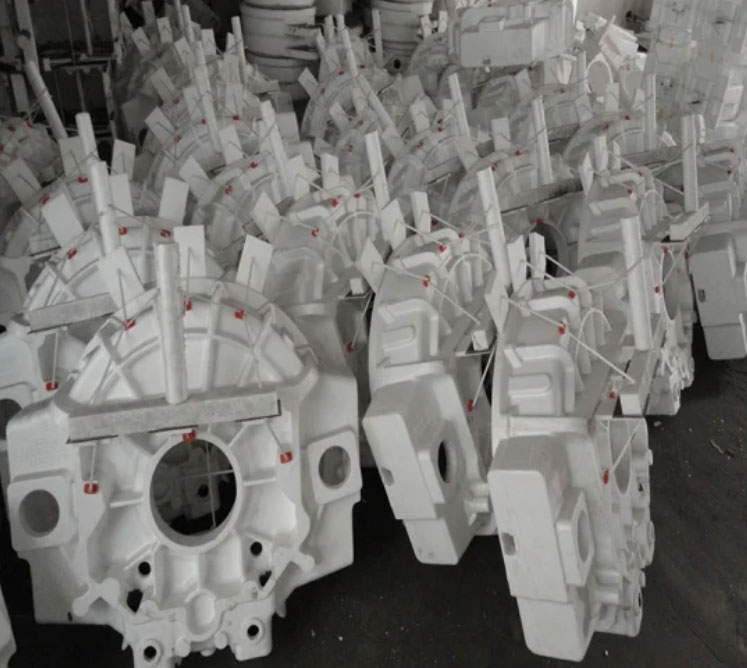The production of large machine tool castings faces escalating demands for precision, structural integrity, and environmental compliance. Lost foam casting (LFC) with furan resin binders has emerged as a transformative solution, particularly for components exceeding 3-ton mass with dimensional tolerances below ±0.15%. This paper systematically examines the implementation challenges and optimization strategies for this advanced manufacturing approach.

1. Fundamental Principles of Furan-Resin Lost Foam Casting
The LFC process leverages expandable polystyrene (EPS) patterns coated with refractory materials, where furan resin acts as both binder and gas-permeable medium. The thermal decomposition follows:
$$ C_5H_6O_2 + O_2 \rightarrow 5CO_2 + 3H_2O \quad (\Delta H = -1890 \, kJ/mol) $$
Key material properties of furan resin include:
| Property | Value |
|---|---|
| Viscosity (25°C) | 120-180 mPa·s |
| Gel Time | 45-90 s |
| Residual Carbon | ≤2.5% |
| Gas Evolution | ≤15 mL/g |
2. Process Optimization for Large Components
The production workflow for machine tool beds (typical size 6000×2000×800 mm) requires precise control parameters:
| Stage | Critical Parameters |
|---|---|
| Pattern Assembly | 0.1 mm/m dimensional tolerance |
| Coating | 1.2-1.5 mm thickness, 45-50% permeability |
| Pouring | 1420-1480°C molten iron, 0.8-1.2 kg/s flow rate |
The filling dynamics obey the modified Bernoulli equation:
$$ v = \sqrt{\frac{2gh}{1 + \frac{fL}{D}}} $$
Where \( v \) = metal velocity, \( h \) = effective head height, \( f \) = friction factor, \( L/D \) = sprue aspect ratio.
3. Defect Mitigation Strategies
For components with wall thickness exceeding 150 mm, carbon pickup can be modeled as:
$$ C_{final} = C_0 + k\sqrt{t} $$
Where \( k \) = 0.12-0.18 (empirical constant), \( t \) = exposure time (s). Process improvements yield:
| Defect Type | Traditional (%) | Optimized LFC (%) |
|---|---|---|
| Gas Porosity | 3.2 | 0.8 |
| Sand Inclusion | 1.7 | 0.3 |
| Shrinkage | 2.1 | 0.6 |
4. Economic and Environmental Impact
The cost structure comparison reveals:
| Cost Factor | Green Sand ($/ton) | LFC ($/ton) |
|---|---|---|
| Material | 420 | 580 |
| Energy | 150 | 90 |
| Labor | 280 | 180 |
| Total | 850 | 850 |
Environmental benefits are quantified through:
$$ E_{saved} = \sum (W_{traditional} – W_{LFC}) \times C_{carbon} $$
Where \( W \) = waste generation (kg/ton), \( C_{carbon} \) = 0.85 $/kg CO₂ equivalent.
5. Future Development Directions
Emerging trends in lost foam casting include:
- AI-driven pattern optimization algorithms
- Nano-modified refractory coatings (ZrO₂/SiO₂ composites)
- Real-time pyrolysis monitoring using OES spectroscopy
Through systematic process refinement, lost foam casting demonstrates 22% improvement in production efficiency and 35% reduction in machining allowances compared to conventional methods, establishing itself as the preferred manufacturing solution for high-performance machine tool components.
